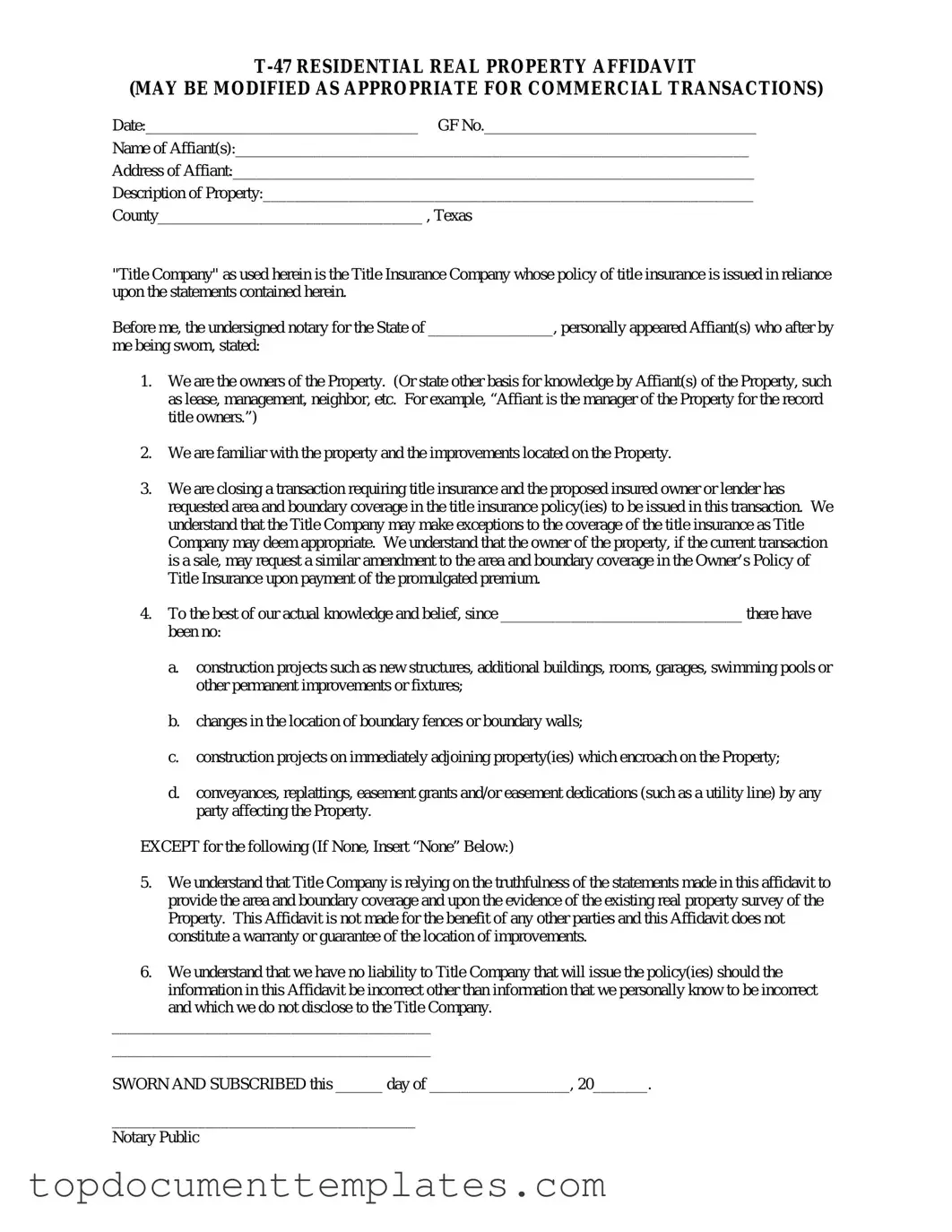The Texas residential property affidavit T-47 form plays a crucial role in real estate transactions, particularly in the context of title insurance and property ownership verification. This form serves as a declaration by the property owner, affirming certain key details about the property in question. Among the most significant aspects covered in the T-47 are the identification of the property, the confirmation of its current use, and the disclosure of any existing easements or encroachments. The affidavit also includes a statement regarding the absence of any adverse claims against the property, which is vital for potential buyers and lenders. By completing this form, property owners provide essential information that helps streamline the closing process, ensuring that all parties involved have a clear understanding of the property’s status. Additionally, the T-47 form is often required by title companies to issue a title policy, making it an indispensable component of real estate transactions in Texas. Understanding its purpose and implications can greatly benefit both buyers and sellers, as well as real estate professionals navigating the complexities of property transfers.
